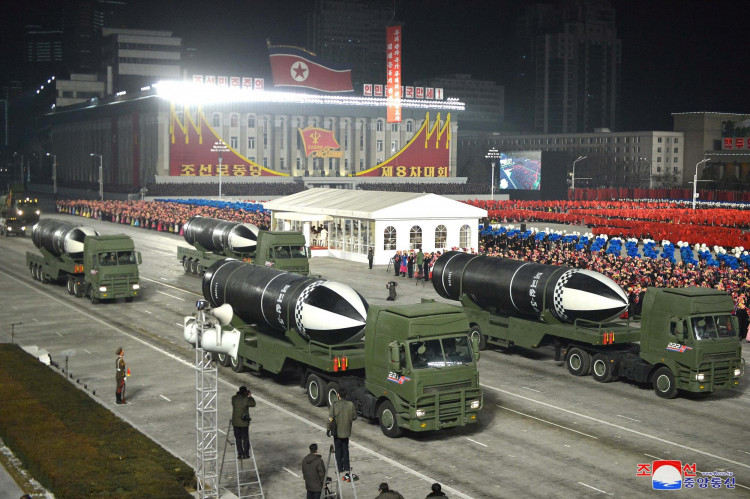North Korea fired a midrange ballistic missile into its eastern seas on Monday, marking its first weapons test of 2025. The provocative move coincided with U.S. Secretary of State Antony Blinken's visit to Seoul, where he met South Korean officials amid ongoing political instability in the region.
The missile, believed to be an intermediate-range ballistic missile (IRBM), traveled approximately 690 miles before landing in the Sea of Japan, also known as the East Sea. South Korea's Joint Chiefs of Staff said the missile was launched from near Pyongyang at noon local time. Initial analysis suggests the weapon may possess characteristics of hypersonic missiles tested by Pyongyang in the past year.
U.S., South Korean, and Japanese officials condemned the launch, viewing it as a pointed message to the incoming administration of President-elect Donald Trump. The test underscores North Korea's commitment to expanding its nuclear and missile capabilities, with state media previously emphasizing leader Kim Jong Un's ambition to develop advanced technologies, including solid-fuel missiles and hypersonic warheads.
"Today's launch is just a reminder to all of us of how important our collaborative work is," Blinken said during a press conference in Seoul. He highlighted the need for real-time data sharing and joint military exercises to counter Pyongyang's growing threat.
Blinken also raised concerns over North Korea's deepening ties with Russia. He alleged that Moscow has been sharing satellite technology with Pyongyang in exchange for North Korean troops supporting Russia's war in Ukraine. Over 1,000 North Korean soldiers have reportedly been killed or injured in the conflict.
The missile test comes at a time of heightened political uncertainty in South Korea. Acting President Choi Sang-mok assumed temporary leadership after the impeachment of President Yoon Suk Yeol, who faced widespread backlash following his controversial declaration of martial law in December. The Constitutional Court is now deliberating Yoon's fate, and if permanently removed, the country will likely face an early presidential election.
The political turmoil has raised questions about the durability of recent U.S.-South Korea-Japan collaborations, which had been strengthened during outgoing President Joe Biden's term. Blinken expressed confidence in South Korea's democratic institutions despite the turbulence.
Japan also criticized the missile test, noting that while the missile landed outside its exclusive economic zone, its trajectory indicated increasing North Korean technical capabilities. Hypersonic missiles, designed to evade modern missile defense systems, present a formidable challenge to regional security.
North Korea has conducted numerous missile tests in recent years, defying multiple United Nations Security Council resolutions. The regime often uses such demonstrations to signal its discontent with U.S. military alliances in the region and to justify its weapons program.
Guo Jiakun, spokesperson for China's Foreign Ministry, offered a muted response, stating, "China's position on the Korean Peninsula issue is consistent and clear. On relevant launch activities, I have no new comments to make."
Solid-fuel missile development remains a key priority for North Korea. Unlike liquid-fuel systems, solid-fuel missiles require less logistical preparation and are more challenging to detect, enhancing their survivability.






